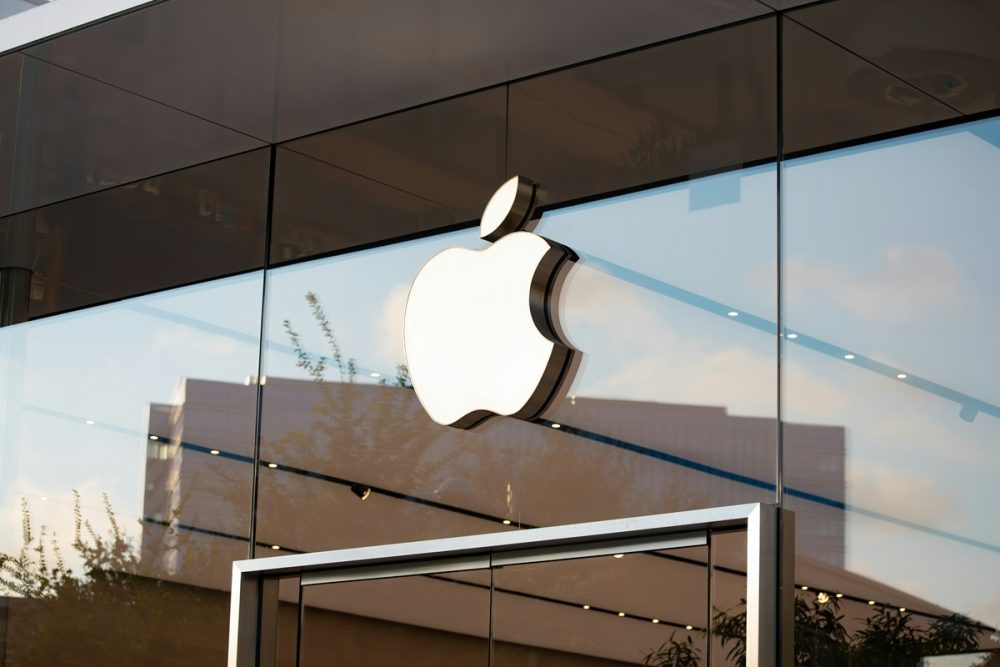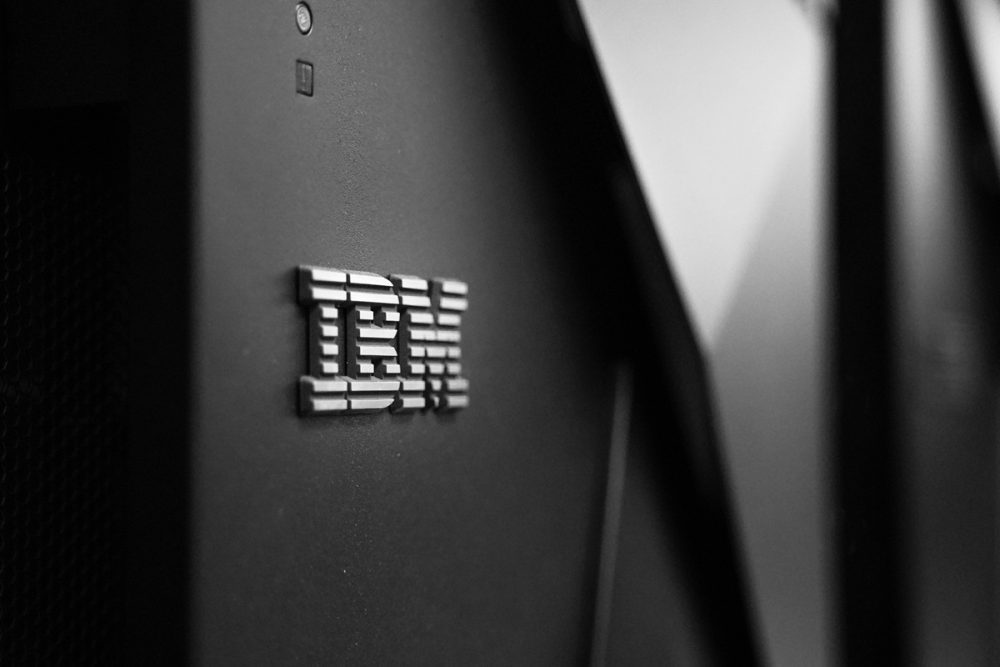B2C vs B2B: Which business model is a better investment?
Two dominant models shape how companies operate and generate revenue in the business world: Business-to-Consumer (B2C) and Business-to-Business (B2B). These models represent fundamentally different approaches to market engagement. B2C giants like McDonald’s and Netflix build their success on broad consumer appeal, rapid transactions, and high-volume sales. In contrast, B2B leaders such as Salesforce and IBM excel through specialised enterprise solutions, cultivating lasting client relationships and securing higher profit margins.
Each model presents distinct opportunities and challenges for investors, raising a crucial question: Which business model offers more sustainable long-term growth and resilience in a rapidly changing economy?
B2C model

The Business-to-Consumer (B2C) model refers to businesses that sell products or services directly to individual consumers. A prime example of a B2C operation is Apple, which sells its products such as iPhones, MacBooks, and subscription services directly to consumers through both online and retail channels. This model emphasizes brand experience, emotional appeal, and convenience to drive sales volume and customer loyalty. Other notable B2C examples include Netflix, which delivers on-demand entertainment to millions worldwide, and McDonald’s, which thrives on speed, consistency, and global brand recognition.
B2C companies thrive on strategies that prioritise customer engagement, brand loyalty, and broad market reach. In essence, they focus on capturing consumer attention, nurturing long-term relationships, and achieving scale through widespread demand—whether through high-volume, lower-margin sales or premium, high-margin products that command strong brand loyalty.
Key characteristics of B2C models
| Characteristic | Description |
| 1. Direct Consumer Focus | Products or services are sold directly to individual consumers rather than businesses. |
| 2. High Transaction Volume | Involves many small transactions, often at lower price points per sale. |
| 3. Emphasis on Brand and Emotion | Success relies on strong branding, emotional appeal, and consumer trust. |
| 4. Shorter Sales Cycles | Consumers make purchase decisions quickly, often with minimal research or negotiation. |
| 5. Mass Marketing and Advertising | Uses broad marketing channels (TV, social media, influencer campaigns) to reach large audiences. |
| 6. Customer Experience and Convenience | Focuses on seamless experiences; easy navigation, quick checkout, and fast delivery. |
| 7. Price Sensitivity | Consumers are more price-conscious; discounts and promotions influence buying decisions. |
| 8. Lower Switching Costs | Consumers can easily switch brands, making retention and loyalty programs vital. |
B2B model

The Business-to-Business (B2B) model refers to companies that sell products or services to other businesses rather than directly to individual consumers. A prime example of a B2B operation is Salesforce, which provides customer relationship management (CRM) software to enterprises seeking to manage sales, marketing, and customer support efficiently. Similarly, IBM delivers IT infrastructure, cloud solutions, and consulting services tailored to the complex needs of corporations and governments worldwide.
This model emphasizes long-term partnerships, customised solutions, and operational efficiency rather than mass-market appeal. B2B companies typically engage in fewer but higher-value transactions, focusing on reliability, return on investment, and performance outcomes for their clients.
In essence, B2B businesses thrive on relationship-driven strategies, delivering mission-critical products or services that become deeply embedded in their clients’ operations—resulting in high switching costs, recurring revenue, and durable competitive advantages over time.
Key characteristics of B2B models
| Characteristic | Description |
| 1. Lower Transaction Volume, Higher Value | Fewer transactions overall, but each deal tends to be larger in scale and revenue. |
| 2. Relationship-Driven Sales | Success depends on long-term partnerships, trust, and consistent performance. |
| 3. Longer Sales Cycles | Purchasing decisions often involve multiple stakeholders, detailed proposals, and negotiations. |
| 4. Customised Solutions | Products and services are frequently tailored to meet each client’s specific operational needs. |
| 5. High Switching Costs | Integration with client systems and operational dependencies make it difficult for customers to switch vendors. |
| 6. Emphasis on ROI and Efficiency | Buyers focus on cost savings, productivity gains, and measurable business outcomes. |
| 7. Smaller, Targeted Market | Marketing efforts are more focused and personalised, aimed at specific industries or decision-makers. |
| 8. Contract-Based Revenue | Sales are often secured through long-term contracts, leading to recurring and predictable revenue streams. |
Growth strategies
B2C
B2C companies focus on scaling rapidly through market expansion, customer acquisition, and brand differentiation. Their success hinges on capturing broad audiences and converting attention into recurring revenue. Brick-and-mortar giants like Walmart achieve this by leveraging data analytics, logistics efficiency, and product ecosystems to dominate offline retail channels. Meanwhile, digital leaders such as Netflix and Spotify exemplify scalable growth through subscription-based models, expanding globally with minimal incremental costs while strengthening engagement through personalised content.
Sustainable B2C growth increasingly depends on creating seamless digital experiences that remove friction from the purchase journey, supported by AI-driven personalisation, omnichannel integration, and mobile-first strategies. Companies also drive expansion by investing in brand storytelling, social media engagement, and influencer partnerships that amplify reach and emotional resonance. To retain customers in competitive markets, leading B2C firms implement loyalty ecosystems, tiered rewards, and exclusive memberships—turning repeat buyers into advocates and transforming transactional relationships into long-term value.
B2B
In contrast, B2B companies prioritise long-term relationships, recurring revenue, and scalable enterprise solutions over mass-market reach. Their growth depends on expanding within existing client networks, deepening product integration, and entering adjacent verticals. Industry leaders like Salesforce and IBM exemplify this approach: Salesforce drives growth through cloud-based subscriptions and ecosystem expansion, while IBM leverages its global expertise in AI, cloud infrastructure, and consulting to secure high-value enterprise contracts.
Sustainable B2B growth stems from customer retention, contract renewals, and upselling complementary solutions. These firms invest heavily in account-based marketing (ABM), strategic partnerships, and consultative selling to build trust and align closely with clients’ long-term business goals. Because sales cycles are longer and relationships deeper, B2B companies focus on thought leadership, industry credibility, and product differentiation through innovation and service excellence.
Market runway
B2C
B2C companies operate in vast and constantly evolving consumer markets, offering significant opportunities for growth through global expansion, digital adoption, and lifestyle shifts. The sheer scale of consumer demand across sectors such as retail, content, and entertainment provides an extensive runway for innovation and market penetration.
Companies like Apple and Nike continuously extend their runway by entering new product designs/categories, leveraging technology to enhance user experience, and expanding geographically into emerging markets with rising disposable incomes. Similarly, digital-native brands such as Netflix, Shopee, and Shein tap into the accelerating digitalisation of consumer behaviour, scaling rapidly through mobile-first platforms and personalised engagement.
The B2C market runway is further supported by demographic trends, urbanisation, and the growing middle class in developing economies. However, capturing this runway requires constant reinvention; brands must anticipate evolving consumer expectations and leverage AI/data analytics to stay ahead of changing tastes. In essence, the B2C runway is vast but highly competitive, rewarding companies that can adapt quickly, scale efficiently, and maintain strong emotional connections with their customers.
B2B
While the B2B market serves a smaller client base, B2B companies benefit from long-term structural demand driven by digital transformation, automation, and global enterprise connectivity. As organisations modernise operations, migrate to the cloud, and adopt AI-powered tools, the addressable market for B2B solutions continues to expand across nearly every industry from finance and manufacturing to healthcare and logistics.
Industry leaders such as Microsoft and Salesforce exemplify how vast this runway can be. They continue to grow by helping enterprises enhance productivity, streamline workflows, and unlock new efficiencies through scalable, cloud-based infrastructure. Similarly, industrial and logistics players like Siemens and DHL extend their market runway by integrating digital solutions, sustainability initiatives, and data analytics into traditional business models.
Unlike B2C markets that depend on consumer trends, the B2B runway is built on mission-critical needs and multi-year transformation cycles, which provide resilience and predictability. Growth opportunities emerge from expanding existing client relationships, entering new verticals, and developing ecosystem partnerships that deepen integration into customers’ operations. In essence, the B2B market runway is broad, durable, and recurring, offering companies a clear path for sustained expansion through innovation, trust, and enterprise value creation.
Risks and challenges
B2C
Investing in B2C companies carries risks rooted in the fast-changing nature of consumer behavior and highly competitive markets. Unlike B2B firms with long-term contracts, B2C businesses depend heavily on brand appeal and customer loyalty, both of which can shift rapidly. Market saturation across sectors such as retail, e-commerce, and entertainment intensifies competition, leading to thinner margins and higher marketing costs. Companies must constantly innovate and spend aggressively on advertising to retain consumer attention, while rising customer acquisition costs and low switching barriers make sustained growth challenging.
Another key risk lies in changing consumer preferences and price/economic sensitivity. Shifts in lifestyle trends, technology adoption, or values can quickly render a brand or product outdated. Moreover, B2C revenues often fluctuate with the economic cycle: during downturns, consumers cut discretionary spending, directly impacting sales.
In today’s digital-first landscape, technological disruption is another major risk. Innovations such as generative AI, new social media platforms, or alternative retail models (e.g. live commerce, direct-to-consumer brands) can quickly shift competitive dynamics. Traditional leaders may lose market share to more agile, tech-native entrants.
B2B
Investing in B2B companies presents a different set of risks and challenges compared to consumer-facing businesses. While B2B models often offer stability through long-term contracts and recurring revenue, they are not immune to market headwinds.
One key risk lies in customer concentration; many B2B firms rely heavily on a few large clients for a significant portion of their revenue. The loss or downsizing of a single major account can materially impact financial performance. Additionally, B2B sales cycles are typically long and complex, requiring extensive negotiation, product customisation, and multiple decision-makers. This slows revenue growth, ties up working capital, and makes short-term forecasting more difficult.
Another major challenge is technological disruption and innovation cycles. B2B firms must continuously invest in R&D and adapt their offerings to remain competitive, which can pressure margins and capital efficiency. Similarly, intense competition among enterprise solution providers especially in sectors like software, logistics, and industrial equipment can lead to pricing pressure and reduced profitability.
Unlike B2C companies that can grow exponentially through digital platforms, many B2B firms face limits imposed by the specialised nature of their products, the size of their addressable market, and the slow pace of enterprise adoption. Expanding into new verticals or geographies often requires substantial upfront investment in sales teams, infrastructure, and local partnerships—reducing scalability efficiency and returns in the near term.
There’s also the issue of integration and switching costs which are double-edged swords for both sides. While these create strong customer stickiness, they also mean B2B providers must maintain exceptional reliability, service quality, and technical compatibility to avoid costly disruptions or client churn. A single product failure, service outage, or data breach can damage years of trust and jeopardise major contracts.
The fifth perspective
Understanding the dynamics behind B2C and B2B businesses—how they scale, retain customers, and navigate market cycles—can help investors identify companies with durable moats, recurring revenue streams, and strong pricing power. While B2C firms thrive on brand strength, consumer trends, and mass adoption, B2B companies often benefit from stickier contracts, mission-critical products, and predictable cash flows.
Ultimately, the choice between investing in B2C or B2B models depends on your investment objectives, risk tolerance, and preferences. Both models offer unique opportunities and challenges, shaped by their underlying market dynamics and growth drivers.



